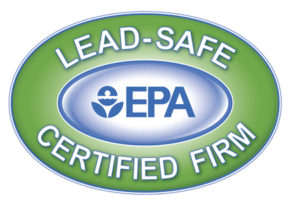 Guest article
Guest article
Do You Have The Right Pollution Insurance?
Today’s plumbing or HVAC professional is assuming risks that were previously covered by their general liability policies. Insurance carriers today routinely insert pollution, asbestos, lead, microbial matter (mold), and bacteria exclusions into their policies. These exclusions were being added over the last 7 years as insurance carriers were paying claims for the above exposures they never intended to cover. Insurance companies develop new exclusions when they start getting losses they never originally contemplated. Plumbers and HVAC contractors are the new targets of the attorneys who routinely sue fire/water restoration contractors. The need for pollution insurance arose for this group when pollution exclusions were put into their policies. Lawyers started suing for mold, then lead and asbestos.
Plumbers and HVAC contractors work in environments where asbestos is present more than they know. It was illegal for asbestos to be in building materials after 1985. Asbestos can be found in joint compound sprays for texturing drywall, the drywall itself, plaster walls, exterior stucco, floor tiles and mastic, duct wrap, and many other locations in pre-1985 structures. The largest losses we see for restoration contractors are by far asbestos. Asbestos is the number one exposure for plumbers and HVAC contractors as it is for restorers.
Plumbers and HVAC contractors may unknowingly be working in environments where Chinese Drywall currently exists. There are currently billions of dollars of litigated claims for Chinese Drywall. The consensus is that Chinese Drywall claims are not covered by general liability as most contractor liability policies have absolute pollution exclusions. If a contractor sets foot on a job and there is a future Chinese Drywall claim, they will need pollution insurance for their defense and possible indemnity. If a property owner starts a construction defects claim, they will name every contractor that ever set foot on their property.
 A technician may be working in a pre-1985 structure. He may or may not be aware of the ages of the homes or structures in the area. He shuts off the water to the structure and makes the repair. He may need to cut into the wall or floor to make the repair. If he does not make the repair immediately the structure will most likely have mold in two days. The technician does not take the time to obtain an outside party to test for asbestos or lead and wait for the results before he cuts into the wall to make the repair. The CSLB requires testing before anyone disturbs or mechanically abrades a potential asbestos-containing material (ACM). Once the technician makes the repair a water damage mitigation company comes in and starts the restorative drying process. They typically remove the base and drill holes in the stud cavities in the drying process.
A technician may be working in a pre-1985 structure. He may or may not be aware of the ages of the homes or structures in the area. He shuts off the water to the structure and makes the repair. He may need to cut into the wall or floor to make the repair. If he does not make the repair immediately the structure will most likely have mold in two days. The technician does not take the time to obtain an outside party to test for asbestos or lead and wait for the results before he cuts into the wall to make the repair. The CSLB requires testing before anyone disturbs or mechanically abrades a potential asbestos-containing material (ACM). Once the technician makes the repair a water damage mitigation company comes in and starts the restorative drying process. They typically remove the base and drill holes in the stud cavities in the drying process.
The problem is they typically are not testing for asbestos or lead because they must attempt to dry the structure down right now before mold starts growing. The problem is asbestos fibers are not friable when they are wet. Once the surfaces of the holes become dry the dust is friable and dangerous. No one usually tests for asbestos or lead unless reconstruction is required. The reconstruction contractor will usually test for asbestos or lead at that point before removing any more materials.
Restoration and reconstruction contractors find themselves in court occasionally defending an asbestos or lead claim. These claims usually surface when you have an overzealous property owner who wants a whole new structure when there is only a partial insurable loss. They may use the services of a public adjuster to maximize their insurance claim. They may also sue the company for bad faith and every contractor who ever set foot on the job. The lawyers and public adjusters have figured out that restorers routinely disturb asbestos-containing material in emergency situations. They are now making that link to the plumbers and HVAC contractors as well. The plumbers were the ones who put the first holes in the building even though it was an emergency.
Plumbers, like restorers, work in buildings built before 1978. Lead was outlawed in building materials then. Lead is found most commonly in paint. It may be located 6 layers down on a wall surface or on interior trim or doors. It is illegal to mechanically abrade or disturb a lead-containing material without testing first. If the test is positive a lead abatement contractor will be required on the job. Like asbestos, there is no time to test as the emergency of fixing the water leak is more pressing at the time.
Also, beginning in April 2010, federal law will require contractors that disturb lead-based paint in homes, childcare facilities, and schools, built before 1978 to be certified by the EPA and follow specific work practices to prevent lead contamination. Therefore beginning in April 2010, customers may ask to see your contractor’s certification.
 A plumber may go out to a job, open a wall, and find mold on a job site. Adjusters can tell by the species of mold how long the water was leaking. Certain species of mold like Stachybotrys take longer to develop than species like penicillium, ulocladium, or aspergillus. Stachybotrys is the black mold the media likes to talk about. Stachybotrys takes a long time to develop. If an adjuster has someone test the mold and finds this type of mold, they know the leak was not a sudden discharge which is covered by insurance but a slow leak which is a maintenance issue. The adjuster will probably deny the claimant the owner will get an attorney and sue every contractor who set foot on the job.
A plumber may go out to a job, open a wall, and find mold on a job site. Adjusters can tell by the species of mold how long the water was leaking. Certain species of mold like Stachybotrys take longer to develop than species like penicillium, ulocladium, or aspergillus. Stachybotrys is the black mold the media likes to talk about. Stachybotrys takes a long time to develop. If an adjuster has someone test the mold and finds this type of mold, they know the leak was not a sudden discharge which is covered by insurance but a slow leak which is a maintenance issue. The adjuster will probably deny the claimant the owner will get an attorney and sue every contractor who set foot on the job.
The plumber technician may have done the right thing by having the owner sign off on his paperwork agreeing mold
was present before he showed up. He may have even properly contained the area until a professional could be called by the owner. He may have even recommended to the owner they contact a Certified Industrial Hygienist. This means nothing as the contractor may still need to defend a lawsuit when heeded everything right.
HVAC contractors have unique pollution liability exposures as well. Some indoor air quality exposures include “sick building syndrome,” Legionnaire’s Disease, bacteria, and staph. We routinely see loss runs from hundreds of contractors across the country. Most claims never pay out any indemnity. Most contractor liability claims involve getting our insured dismissed from a claim where they did nothing wrong. The vast majority of the claims are a nuisance or nonsense claims. It is now possible to obtain general liability and pollution liability insurance combined on the same policy. In many cases, general liability and pollution insurance may be obtained for about the same or less premium one currently pays for general liability all by itself. We have seen a few plumbing contractors recently who have spent $100,000 or more of their own money on uncovered mold losses.
National E & S is a wholesale specialty insurance brokerage that works exclusively with licensed insurance agents and brokers. Ross Driscoll, CR is the CEO of National E & S Insurance Brokers, Inc. He has spent 31 years in the insurance and holds a Fire & Casualty Agent /Brokers license, Surplus Lines license, Life and Disability License, and Reinsurance Intermediary license. He has provided expert witness testimony and consulting services and holds a Certified Restorer designation. The agency is currently the Preferred Vendor for three national restoration trade associations, two national restoration franchisors, and the California PHCC. The agency currently writes in 46 states.
To learn more please visit our website: www.nationaleands.com/plumbers.php
You may also contact them by phone or email:
Ross Driscoll [email protected]
Phone: (661) 266-4444
Fax: (661) 266-9391
